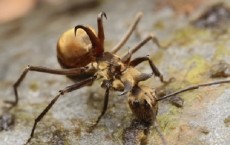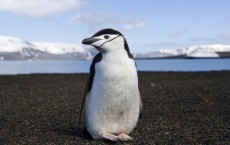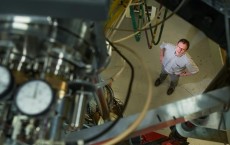
According to the predictions of quantum mechanics, microscopic objects can take different paths at the same time. In fact, researchers have found that Caesium atoms can take two paths at the same time.

Extreme weather phenomena called atmospheric rivers may be behind the intense snowstorms that were recorded in 2009 and 2011 in East Antarctica.

Scientists are taking a closer look at silk-weaving ants, and have made a discovery that may change our understanding of how all creatures work together. Researchers have found that the insects could evolve and abandon and then re-evolve the practice of building nests from silk.

Lasers have yet another use. Scientists are using them to transform metals into extremely water-repellent materials without the need for temporary coatings. This could be huge for airplanes, anti-rust materials and other applications.

It looks as if picky eaters may be going hungry if climate change continues. Scientists have found two species responding very differently to a changing world, and their main difference happens to lie in what they eat.

Two of the last unexplored frontiers are the deep ocean and the depths of space. Now, scientists are combining these two fields with a new discovery.

Researchers at Concordia University found that social integration can influence mental and physical health.

Statistics show that 2.3 million adults in the United States alone are affected by seizure disorder; that's 1 in 26 people who will be diagnosed with the health issue--otherwise known as epilepsy--at some point in their lives. Knowing when a seizure will occur is half the battle.

Researchers at the University of Massachusetts Medical School examined how genetically altered worms spend a greater portion of their lives in relatively sedentary and frail states. The findings, published in the Proceedings of the National Academy of Sciences (PNAS), point out how genes that increa...

It's a bit hard to tell exactly what this new species is. Discovered in Cambodia's Cadamom Mountains, the slimy, stringy creature could easily be mistaken for a big worm or even a snake. Well, turns out, it's neither. It's actually a legless amphibian.

Researchers at Saint Louis University (SLU) have discovered a way to prevent type 1 diabetes in an animal model--a chronic autoimmune disease that occurs when the body's immune system destroys insulin producing pancreatic beta cells that harm insulin production levels and result in hyperglycemia.

Genetics studies are moving forward by leaps and bounds and now, we may just be entering the age of "designer babies." Tony Perry, a pioneer in cloning, has announced that he's managed precise DNA editing at the moment of conception in mice.